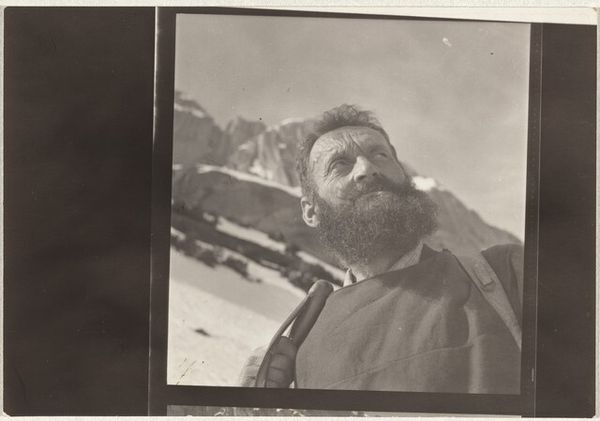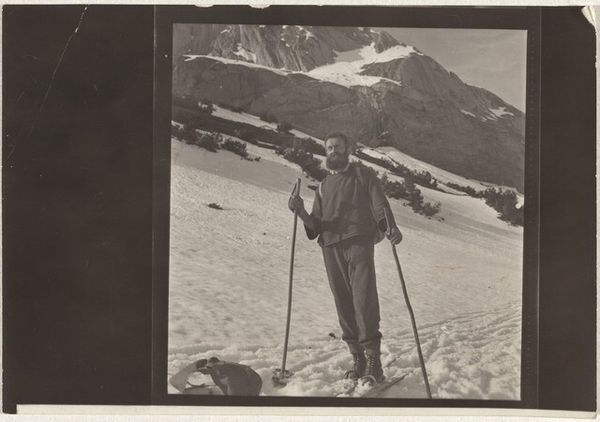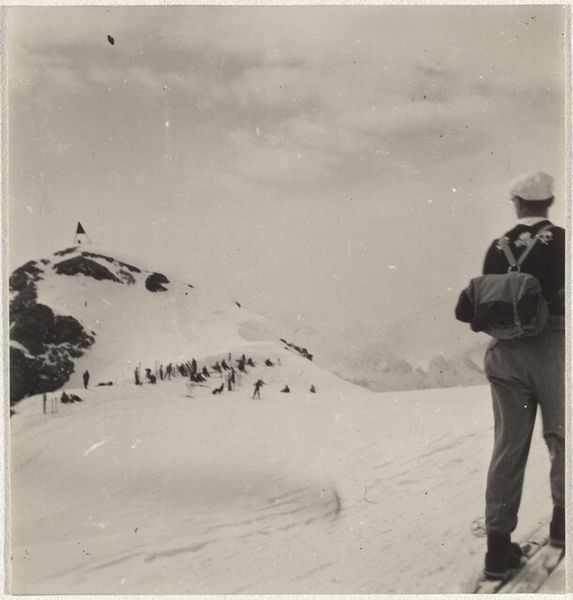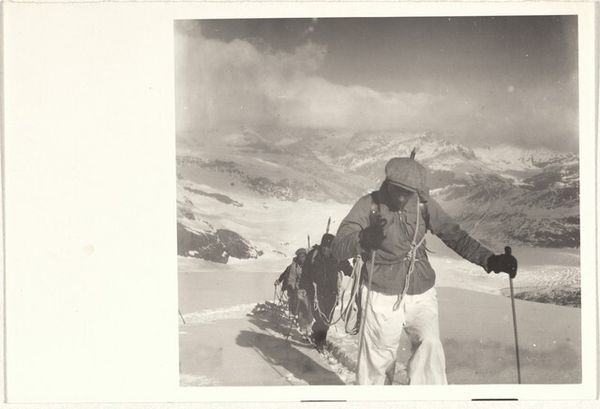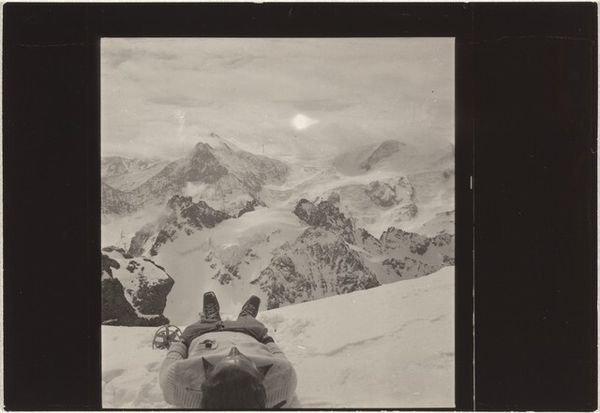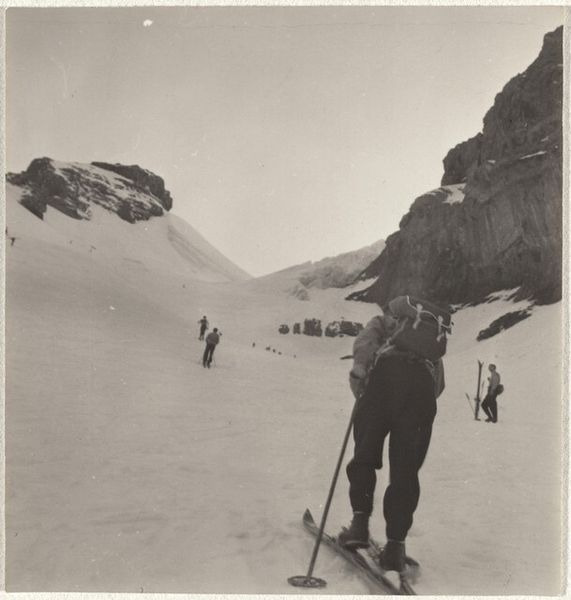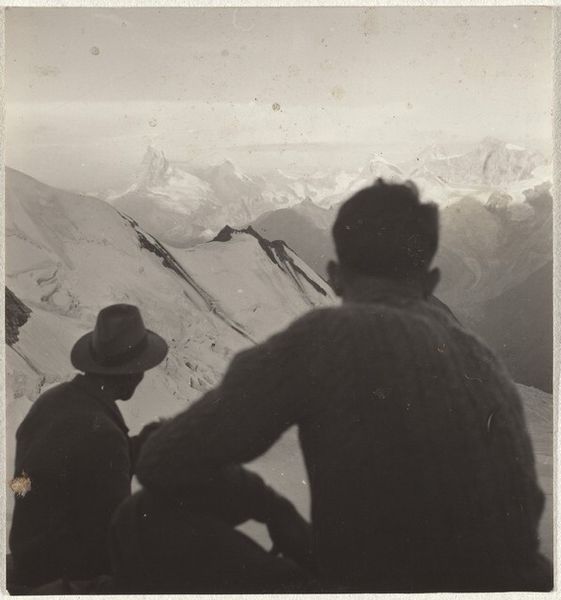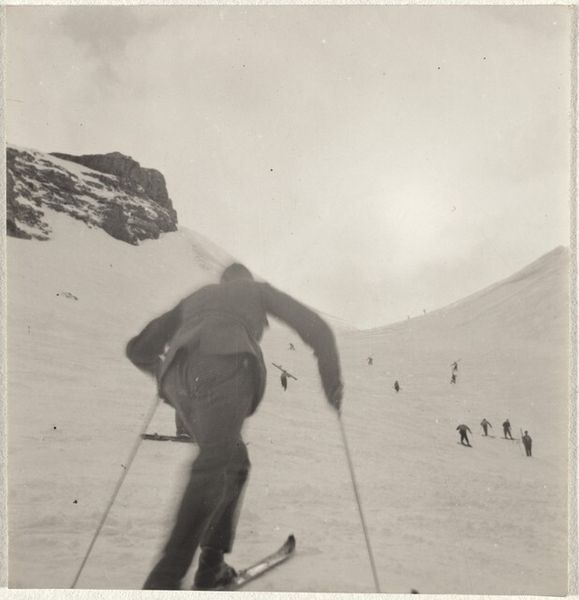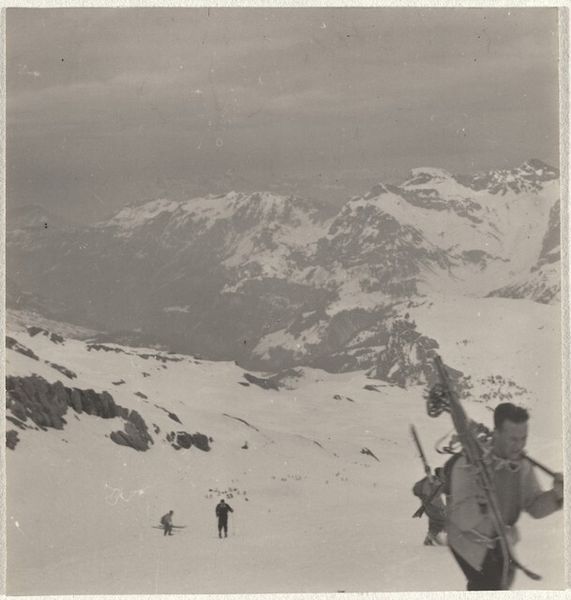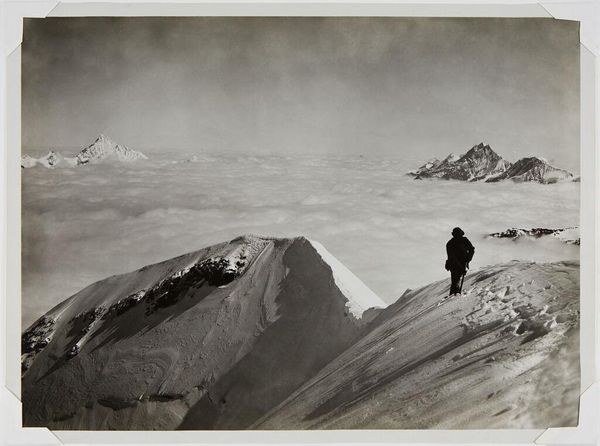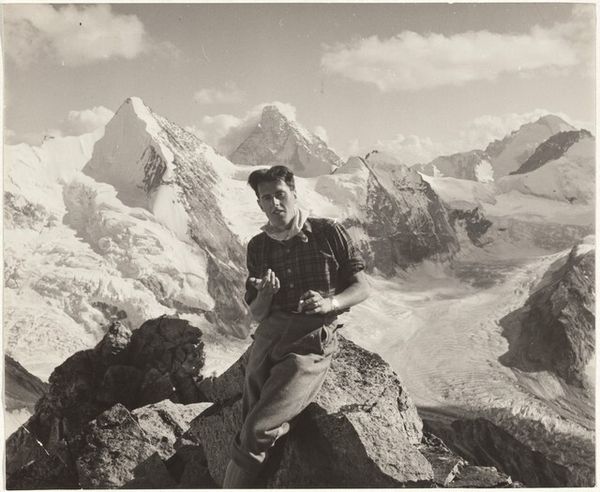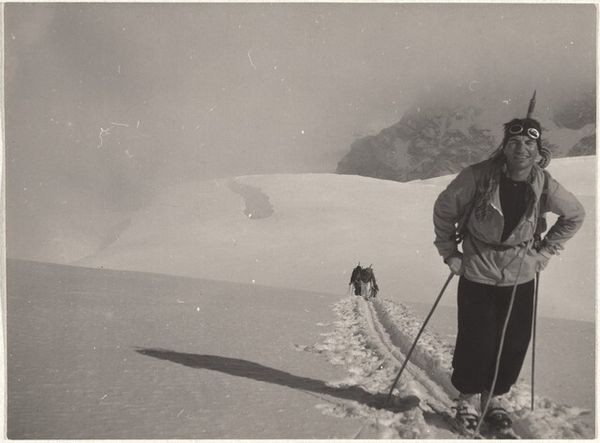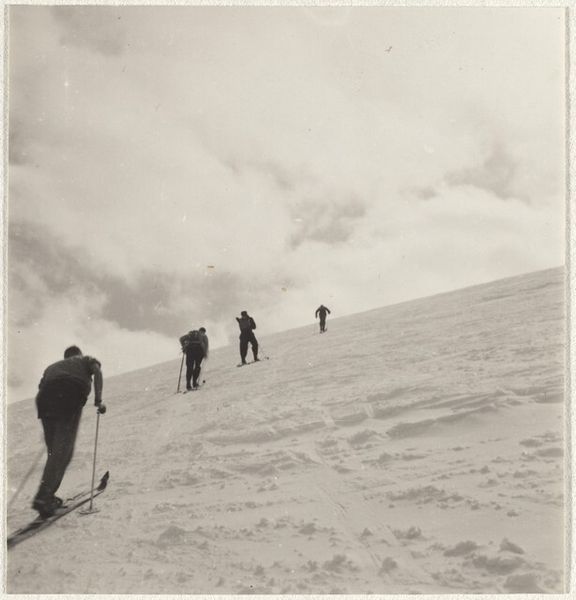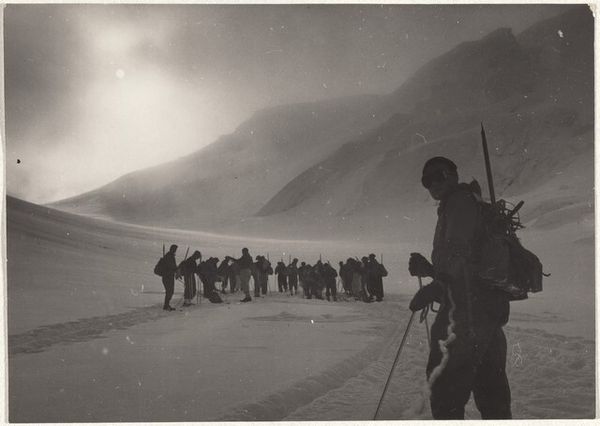
print, photography, gelatin-silver-print
#
portrait
#
black and white photography
# print
#
landscape
#
archive photography
#
street-photography
#
photography
#
historical photography
#
gelatin-silver-print
#
monochrome photography
#
realism
Dimensions: image: 5.9 x 5.6 cm (2 5/16 x 2 3/16 in.) sheet: 6.5 x 9.4 cm (2 9/16 x 3 11/16 in.)
Copyright: National Gallery of Art: CC0 1.0
Editor: This gelatin-silver print, “Mountain farmer, Canton of Valais,” was created by Robert Frank between 1943 and 1944. It’s a striking portrait. The farmer's face is so weathered, his beard thick, and he seems to emerge right out of the mountains themselves. What do you see in this piece beyond the immediate impression? Curator: I see a visual commentary on the relationship between humans and their environment. Consider the historical context: Switzerland during wartime, a nation attempting to retain neutrality, relying heavily on its agrarian population and natural resources. Frank’s farmer isn't merely a subject, but a symbol of resilience and rootedness. Look at the texture—the lines in his face echo the rugged mountains in the background. Do you think that's a deliberate parallel? Editor: That's interesting! I hadn’t considered the wartime context so explicitly, or that his weathered features could mirror the landscape. It makes me think about how labor and the land shape identity. But could this also reinforce a potentially romantic or even idealized view of rural life? Curator: Precisely. And that's where critical analysis comes in. While the image may initially evoke admiration, we must also question whether it overlooks the potential hardships and power dynamics inherent in agricultural labor. Who benefits from this portrayal? Whose story is being left untold? How might a feminist perspective reframe our reading of this image, considering the often-invisible labor of women in agricultural communities? Editor: I hadn't thought about the gendered aspect of it either! That opens up so much more to unpack. Curator: Absolutely! Considering such complexities moves us beyond a purely aesthetic appreciation toward a deeper, more nuanced understanding of both the photograph and the society it reflects. Editor: This conversation has really changed the way I see this image, I'll definitely start applying these critical lenses in my own art analysis from now on.
Comments
No comments
Be the first to comment and join the conversation on the ultimate creative platform.
